
White Paper
Sensors for Corrosive Environments
Learn about sensor design advancements to withstand exposure to corrosive and hostile chemical environments.
From factory floors to fitness trackers, sensors play a crucial role in the ever-evolving demands to meet tomorrow’s expectations. Consumer and industrial devices contain a growing number of sensors driven by widespread use of wireless and IoT technology. Advances within sensors are vital to these markets—ultra-compact, low power, high accuracy, digital and harsh media resistant sensors must be designed to meet and surpass these performance challenges.

Pressure sensors are used in a broad range of applications for various markets such as automotive, industrial, medical and consumer products. Our world is becoming more connected and “smarter”. To enable this, sensors are now being used in applications and environments that are not so friendly to sensors. Many of these applications require sensors that are designed to withstand exposure to corrosive and hostile chemicals. Often these chemicals exist in the medium that the sensor is trying to measure. The chemicals will have direct contact with the sensor itself, and in order to provide reliability and a long service life, modern sensors must be designed to withstand and resist attacks by these chemicals. One example is the use of a pressure sensor in a swimming watch. These watches are regularly exposed to water containing chlorine as either a dissolved gas (swimming pool) or in ionic form (ocean water). Chlorine is a strong oxidizer which quickly corrodes most metals and does irreversible damage to the product.
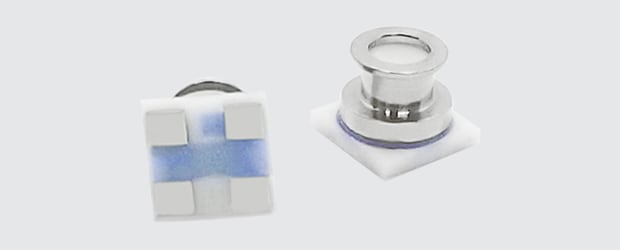

Operation of a MEMS Pressure Sensor
A typical structure of a piezoresistive pressure sensor is a planar silicon diaphragm formed by chemical or dry etching. Piezoresistors are placed near the edge of the membrane and within the linear operating range of the sensor.
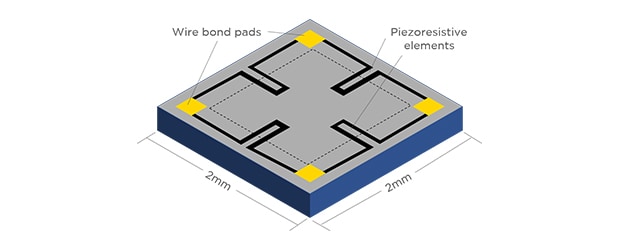
When a pressure is applied to the MEMS element, it deflects much like a trampoline. The deflection causes a strain in the piezoresistive elements and they change their resistance value in proportion to the deflection
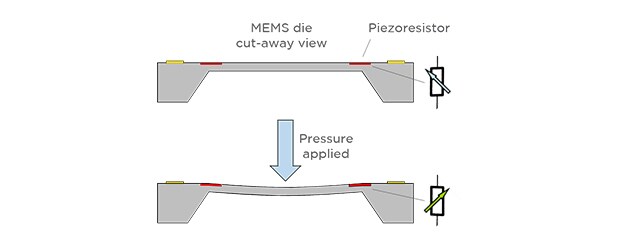
In practice, four piezoresistors are used, arranged in a Wheatstone bridge configuration so as to maximize signal levels and provide a degree of common mode rejection to undesirable noise.

One way to detect problems with the sensor is to look at the output signal offsets with no pressure applied. If operating properly, the differential output should be 0V. If the output is not 0V, it’s an indication there is some problem with the sensing element. Corrosion from aggressive chemicals can affect the way the piezoresistive elements, interconnects, and wire bond pads function. The corrosion can introduce offsets in the output signal and erroneous data from the sensor. In any case, the signal from the MEMS sensor element is connected to a CMOS ASIC where it is compensated for temperature linearity and other errors, then amplified, and digitized. This digital data is then formatted for easy communication to a master microprocessor via I2C or SPI protocol.

Packaging for Protection
Packaging and environmental isolation of the MEMS sensing element and the CMOS ASIC are very important for the reliable functionality of the pressure sensor. They provide protection for the chip and at the same time allow connectivity to the outside world. All sensors must be physically in contact with the medium or phenomenon they are measuring. In addition, they must be connected to the electronic system that is using the data provided by the sensor.
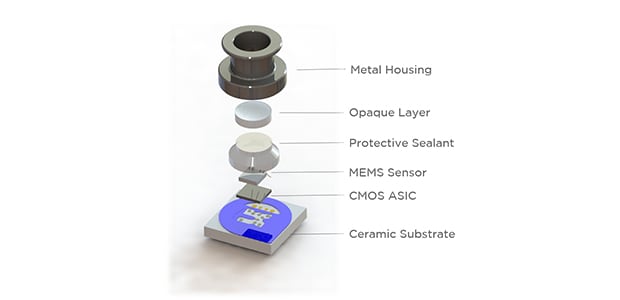
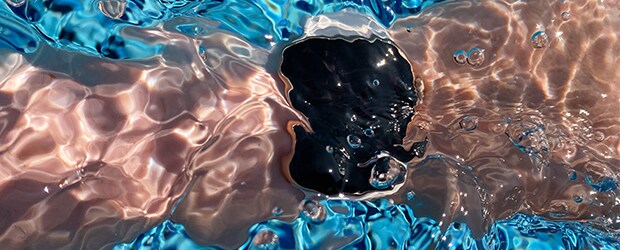

Unique Technology for Harsh Environments
TE Connectivity has developed miniaturized pressure sensors suitable for exposure to harsh and corrosive environments including strong oxidizers such as the halogens (fluorine, chlorine, bromine, iodine). These types of harsh environments exist in automotive, medical, and personal wearables markets.
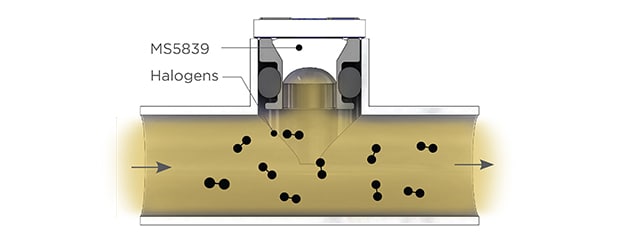
In automotive applications, some of the organic polymers used as “flame retardants” are formulated using halogen compounds. These materials can out-gas halogen based chemicals such as iodomethane (iodine enriched methane). Even in concentrations of a few ppm, iodomethane acts as a catalyst on the intermetallic features of the MEMS and semiconductor chips creating a serious problem for our automotive customers.
Chlorinated water in swimming pools presents a similar and related problem for wearables applications. TE’s pressure sensors are used as altimeters for sport watches used by triathletes or depth sensors in dive computers. Without appropriate device packaging and protection, the sensors can corrode and fail when used in swimming pools or in sea water, both rich in dissolved or ionic chlorine.

TESTING AND VALIDATION
The new technology and design developed by TE Connectivity has been tested with the sensor package exposed to salt water, chlorine water, and also diiodomethane gas. The diiodomethane exposure has been shown as the harshest test. The figures below illustrate the drift in signal output of the sensing element with respect to the diiodomethane and chlorine water exposure. The drifts are considered very limited. Additionally, the drift in offset can mostly be explained through the presence of the humid environment rather than the diiodomethane in it. Another accelerated life test, at 85°C and in 85%RH, showed the same drifts in Offset and Span, as plotted alongside the diiodomethane results.

CHLORINE TESTING
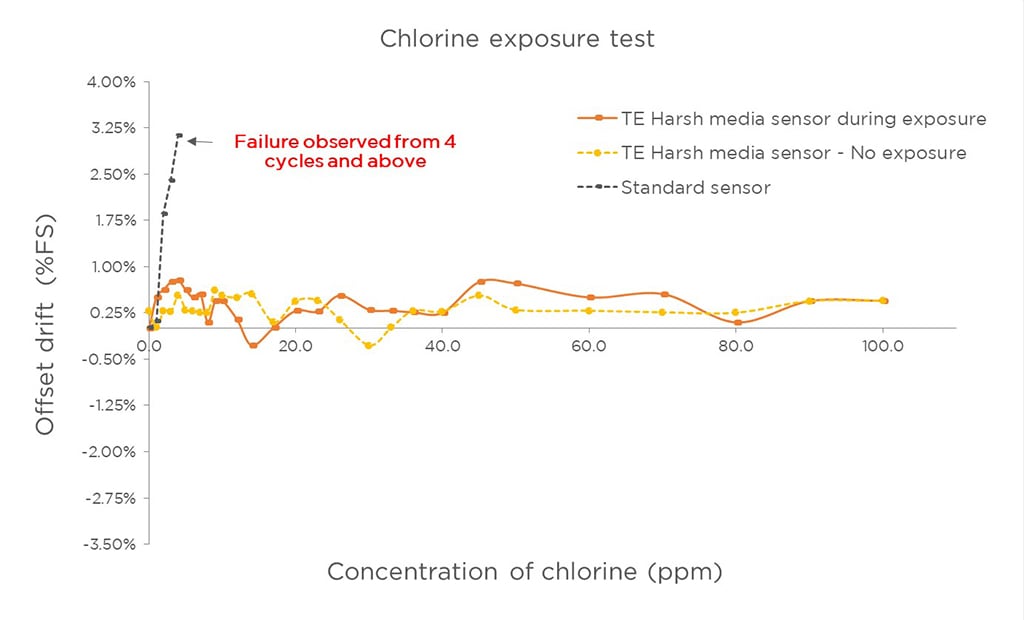
FIGURE 8. Chlorine Test Results

DIIODOMETHANE TESTING
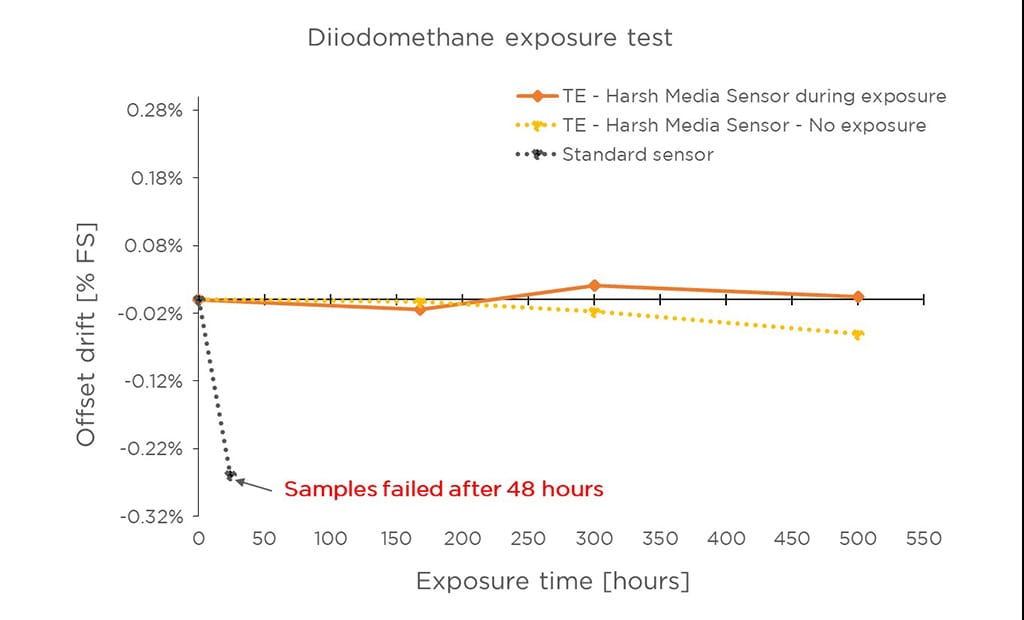
FIGURE 9. Diiodomethane Test Results

Summary
TE Connectivity’s new package design and assembly procedures provides a sensor with enhanced resistance to corrosive chemicals and atmospheres. This provides customers with added confidence that TE sensors will better resist failure or malfunction in applications in corrosive environments.

Actual performance may vary by application. Although the test results presented in this paper show enhanced corrosion resistance, the customer must appropriately test and qualify the sensor for its specific applications.

Microfused is a trademark.


